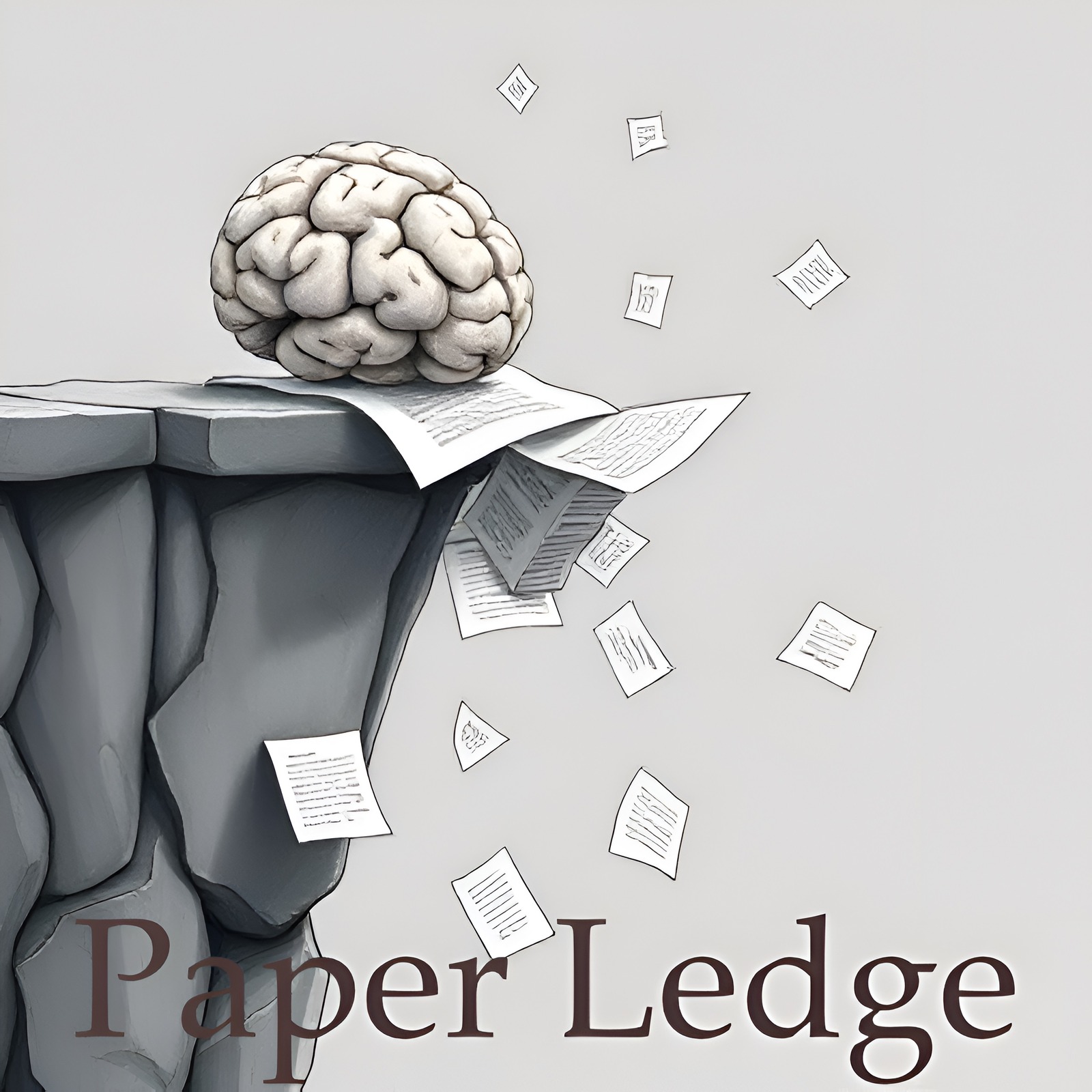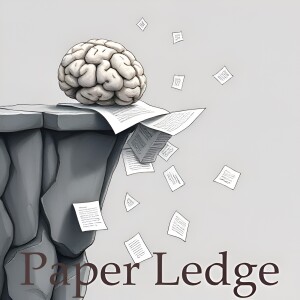PaperLedge

PaperLedge where research meets storytelling is a revolutionary podcast where cutting-edge research meets AI-powered storytelling. Hosted by the Ernis, whose blend of gentle reassurance, cosmic wonder, explanatory clarity, and enthusiastic charm makes complex research accessible to everyone. Each episode, Ernis transforms the latest academic papers into engaging, jargon-free audio experiences that deliver key insights in digestible formats. Whether you’re a researcher seeking interdisciplinary perspectives, a student supplementing your studies, or simply curious about scientific breakthroughs, PaperLedge has something for you.
Episodes
Episodes



Tuesday Oct 21, 2025
Tuesday Oct 21, 2025
Hey PaperLedge crew, Ernis here, ready to dive into another fascinating piece of research! Today, we're tackling a paper that aims to solve a problem we all face, especially in the business world: information overload!
Think about it: companies are drowning in data – reports, documents, emails, you name it. The challenge is turning all that raw information into something useful, something that can actually help them make better decisions. That's where this paper, introducing something called Enterprise Deep Research (EDR), comes in.
Now, EDR is essentially a team of super-smart AI agents working together. Imagine having a crack team of researchers, each with their own specialty, all focused on answering your most pressing questions. That's kind of what EDR does.
Here's the breakdown of this AI dream team:
The Master Planner: This is the team lead. When you ask a question, the Master Planner figures out the best way to break it down into smaller, more manageable tasks. Think of it like planning a road trip – you wouldn't just hop in the car and start driving, you'd plan your route first!
The Search Specialists: These agents are pros at finding information. They scour different sources: the general web, academic papers, GitHub for code, and even LinkedIn for professional insights. It's like having a librarian, a research professor, and a savvy networker all rolled into one!
The Tool Experts: This part is about having the right tools for the job. These agents can use specialized software to analyze files, understand natural language to query databases (NL2SQL), and automate enterprise workflows. Think of it as having access to a fully equipped workshop.
The Visualization Agent: This agent takes all the data and turns it into easy-to-understand charts and graphs. It's like having a data storyteller who can bring the insights to life.
But the coolest part? EDR has a reflection mechanism. If the system realizes it's missing some key information, it can adjust its research strategy. It's like having a researcher who's constantly learning and adapting to new information! And, importantly, humans can also step in to guide the process, ensuring the research stays on track – what they call "human-in-the-loop steering guidance".
The researchers tested EDR on real-world business datasets and found that it outperformed other advanced AI systems, even without human intervention! They even released the EDR framework and benchmark data so other researchers can build upon their work. You can find the code on GitHub and the dataset on Hugging Face (links below!).
"These components enable automated report generation, real-time streaming, and seamless enterprise deployment..."
So, why should you care? Well, if you're in business, EDR could help you make faster, more informed decisions. If you're a researcher, EDR provides a powerful platform for building even more advanced AI systems. And if you're just curious about the future of AI, EDR offers a glimpse into how AI can help us manage the ever-growing flood of information.
Here are a couple of questions that popped into my head:
How can we ensure that these AI agents are using reliable and unbiased information sources? What safeguards are needed to prevent the spread of misinformation?
As AI systems like EDR become more sophisticated, how will this change the roles and responsibilities of human researchers and analysts? Will it replace them, or will it augment their capabilities?
I'm really curious to hear your thoughts on this. What do you think about EDR? Let's discuss in the comments!
Code: https://github.com/SalesforceAIResearch/enterprise-deep-research
Dataset: https://huggingface.co/datasets/Salesforce/EDR-200Credit to Paper authors: Akshara Prabhakar, Roshan Ram, Zixiang Chen, Silvio Savarese, Frank Wang, Caiming Xiong, Huan Wang, Weiran Yao



Tuesday Oct 21, 2025
Tuesday Oct 21, 2025
Hey PaperLedge crew, Ernis here, ready to dive into some seriously cool robotics research! Today, we’re talking about how to build smarter robots – robots that don’t just do, but actually think about what they’re doing.
Think of it like this: you're making a sandwich. A simple robot might just follow a pre-programmed sequence: grab bread, grab filling, put them together. But a smart robot needs to understand what you mean when you say "Make me a sandwich." What kind of sandwich? What ingredients are available? How do I fix it if I mess up?
This paper tackles that problem head-on. The researchers are building what they call an "embodied brain" for robots. It’s essentially the robot's cognitive core, the part that reasons and makes decisions, especially when the robot is manipulating objects. It’s like the robot's inner voice saying, "Okay, I see the bread, I remember that Ernis likes turkey and swiss, now how do I put this together?"
The researchers point out a big problem: we don't have good ways to test how smart these "embodied brains" really are. Existing tests focus on whether the robot succeeds at the task, but not why it succeeds or fails. Or, if the tests do focus on reasoning, they're often too simplistic or not realistic enough.
That's where RoboBench comes in. RoboBench is a brand-new benchmark designed to rigorously evaluate how well these embodied brains, specifically multimodal large language models (MLLMs), perform. Think of it like the SATs, but for robot brains!
So, what exactly does RoboBench test? Well, the researchers have identified five key dimensions:
Instruction Comprehension: Can the robot understand what you're asking it to do, even if the instructions are a bit vague or implicit? For example, if you ask it to "tidy up the desk," does it know what that means in practice?
Perception Reasoning: Can the robot make sense of what it's seeing? Can it identify objects, understand their relationships, and use that information to make decisions?
Generalized Planning: Can the robot adapt its plans to different situations? If the usual ingredients for a sandwich are missing, can it come up with an alternative?
Affordance Prediction: Can the robot understand how objects can be used? Does it know that a knife can be used to cut bread, or that a spoon can be used to stir coffee? This is crucial for robots to interact effectively with the world.
Failure Analysis: When things go wrong (and they inevitably will!), can the robot figure out why and how to fix it?
To make RoboBench realistic, the researchers used data from real robots interacting with a wide variety of objects and environments. They even created a special system called "MLLM-as-world-simulator" to test whether the robot's plans are actually feasible in the real world. It’s like a robot’s internal physics engine, checking if its planned actions are even possible.
The results? Well, even the best robot brains have their limitations. The researchers found that they often struggle with:
Implicit instructions (understanding what you really mean, even if you don't say it explicitly).
Reasoning about objects in space and time (understanding how things change over time and how they relate to each other).
Adapting plans to new situations.
Understanding fine-grained affordances (knowing the subtle ways in which objects can be used).
Diagnosing why things go wrong during execution.
But that's okay! RoboBench isn't about showing that robots are perfect; it's about identifying their weaknesses so we can make them better.
This research matters for everyone! For roboticists, it provides a clear roadmap for improving robot intelligence. For manufacturers, it helps them build robots that can work more effectively in factories and warehouses. And for all of us, it brings us closer to a future where robots can help us with everyday tasks, making our lives easier and more efficient.
"RoboBench provides a comprehensive scaffold to quantify high-level cognition, and guide the development of next-generation embodied MLLMs."
So, as we wrap up, here are a couple of questions that this research brings to mind:
If we can improve a robot's ability to understand implicit instructions, how could that change the way we interact with them?
How can we ensure that robots are not only intelligent but also ethical in their decision-making?
Food for thought, PaperLedge crew! Until next time, keep learning!Credit to Paper authors: Yulin Luo, Chun-Kai Fan, Menghang Dong, Jiayu Shi, Mengdi Zhao, Bo-Wen Zhang, Cheng Chi, Jiaming Liu, Gaole Dai, Rongyu Zhang, Ruichuan An, Kun Wu, Zhengping Che, Shaoxuan Xie, Guocai Yao, Zhongxia Zhao, Pengwei Wang, Guang Liu, Zhongyuan Wang, Tiejun Huang, Shanghang Zhang



Tuesday Oct 21, 2025
Tuesday Oct 21, 2025
Hey Learning Crew, Ernis here, ready to dive into some seriously cool tech! Today, we're talking about making computers way easier to use, thanks to some smart folks who've been working on AI agents that can actually do stuff on your computer for you.
Now, you might be thinking, "Ernis, we already have AI assistants!" And you're right, but think of them as being like a toddler trying to build a Lego castle. They can only do very basic things – click here, type that, scroll down – one step at a time. Each tiny action has to be perfect, or the whole thing collapses. That's how current computer-using AI agents work. They rely on these primitive actions, which can lead to a lot of mistakes and take forever.
But what if our AI assistant could use shortcuts? Imagine giving that toddler a pre-built section of the Lego castle! That's the idea behind this research. These researchers realized that computers actually have tons of hidden "shortcuts" – what they call APIs (like secret codes!) and other tools that let you do complex things with a single command. The problem? These AI agents haven't been able to use them... until now.
This is where UltraCUA comes in. Think of it as a super-smart AI assistant that can use both the basic Lego bricks and the pre-built sections. It combines those basic "click, type, scroll" actions with high-level "use this tool" commands. They call this a hybrid action approach.
So, how did they make this possible? Well, they built a four-part system:
Tool Time! First, they created a system to automatically find and organize all those hidden computer "shortcuts" – the APIs and tools – by digging through software manuals, open-source code, and even generating new ones!
Training Ground: Next, they needed to teach UltraCUA how to use these tools. So, they created over 17,000 realistic computer tasks for it to practice on, like booking a flight or editing a document.
Learn by Doing: Then, they recorded how UltraCUA performed these tasks, using both the basic actions and the high-level tools. This gave them a huge dataset of examples to learn from.
The Two-Step: Finally, they used a special two-stage training process. First, they showed UltraCUA how to use the tools. Then, they let it practice on its own, rewarding it for completing tasks efficiently. This helped UltraCUA learn when to use the basic actions and when to use the tools.
The results? Pretty amazing! The researchers tested UltraCUA on a bunch of different tasks, and it blew the other AI agents out of the water. It was not only more successful but also faster at completing tasks. Even when they threw UltraCUA a curveball with tasks it hadn't seen before, it still performed better than the agents that were specifically trained for those tasks!
"The hybrid action mechanism proves critical, reducing error propagation while maintaining execution efficiency."
This is a big deal because it shows that by giving AI agents access to these high-level tools, we can make them much more powerful and reliable. This could revolutionize how we interact with computers, making them easier to use for everyone.
Why does this matter? Think about it: for people with disabilities, this could mean easier access to technology. For busy professionals, it could mean automating tedious tasks. For everyone, it could mean a more intuitive and efficient computer experience. This isn't just about making computers smarter; it's about making them more useful for us.
So, here are a few things I'm pondering:
How can we ensure these AI tools are accessible and affordable for everyone, not just those with advanced tech skills?
As AI becomes more integrated into our daily computer use, how do we balance convenience with privacy and security?
Could this hybrid approach be applied to other areas of AI, like robotics or even creative endeavors?
That's all for today, Learning Crew! Let me know what you think in the comments. Until next time, keep exploring!Credit to Paper authors: Yuhao Yang, Zhen Yang, Zi-Yi Dou, Anh Nguyen, Keen You, Omar Attia, Andrew Szot, Michael Feng, Ram Ramrakhya, Alexander Toshev, Chao Huang, Yinfei Yang, Zhe Gan



Tuesday Oct 21, 2025
Tuesday Oct 21, 2025
Alright learning crew, Ernis here, ready to dive into some fascinating research! Today, we're talking about something called vector embeddings. Now, that sounds super technical, but think of it like this: imagine you're building a super-smart search engine, like Google, but instead of just matching keywords, it understands what you're really looking for.
Vector embeddings are how computers try to represent words, sentences, even entire documents, as points in a high-dimensional space. So, things that are similar end up close together in that space. You type in "best Italian restaurant near me," and the search engine uses these embeddings to find restaurants that are semantically similar to your request, not just ones that mention "Italian" or "restaurant."
For years, we've been throwing all sorts of tasks at these embeddings: not just search, but also things like reasoning, following instructions, even coding! We're basically asking them to understand everything.
Now, some brainy researchers have started to wonder if there's a limit to what these embeddings can actually do. It's like, can you really cram all the knowledge of the world into a single, albeit very complex, representation?
This paper tackles that very question. Previous studies hinted at limitations, but the common belief was: "Nah, those are just weird, unrealistic scenarios. With enough data and bigger models, we can overcome anything!" This paper challenges that assumption. They show that even with simple, everyday queries, we can run into fundamental limitations.
Here's the core idea, simplified: Imagine you have a library of documents. Your search engine, using embeddings, needs to be able to retrieve the top k most relevant documents for any possible query. The researchers found a connection between the number of different top-k sets the embedding can produce and the dimension of the embedding itself. Think of it like this: if you only have a small number of "slots" to store information (the dimension of the embedding), you can only represent a limited number of different search results.
To make it even clearer, they focused on a super simple case: k=2. Meaning, what if you only ever wanted the top two results? Even then, they found limitations! They even went so far as to directly optimize the embeddings on the test set, basically cheating, and still ran into problems.
To really drive the point home, they created a new dataset called LIMIT. This dataset is specifically designed to expose these theoretical limitations. And guess what? Even the best, state-of-the-art models choked on it, even though the task itself was relatively simple.
"Our work shows the limits of embedding models under the existing single vector paradigm and calls for future research to develop methods that can resolve this fundamental limitation."
So, what does this all mean? It suggests that the way we're currently representing information with single vector embeddings might be fundamentally limited. We might need to think about new approaches to truly capture the complexity of language and knowledge.
Why does this matter? Well, for:
AI researchers: This paper is a wake-up call. It suggests we need to explore new architectures and representations beyond simple vector embeddings.
Search engine developers: It highlights potential limitations in current search technology and suggests areas for improvement.
Anyone using AI-powered tools: It gives us a more realistic understanding of what these tools can and cannot do. It reminds us that AI isn't magic, and there are fundamental limits to its abilities.
Ultimately, this research is about pushing the boundaries of what's possible with AI. It's about understanding the limits of our current tools so we can build even better ones in the future.
So, a couple of things I'm pondering after digging into this paper:
If single vector embeddings are hitting a wall, what alternative representation methods might hold the key to unlocking more sophisticated AI capabilities?
How can we design datasets and benchmarks that more effectively expose the limitations of existing AI models and guide future research?
Credit to Paper authors: Orion Weller, Michael Boratko, Iftekhar Naim, Jinhyuk Lee



Monday Oct 20, 2025
Monday Oct 20, 2025
Hey PaperLedge crew, Ernis here, ready to dive into some fascinating research! Today, we're tackling a paper about making our voice assistants and speech-based apps smarter. Think of it like this: imagine trying to order a pizza over the phone, but the person on the other end keeps misunderstanding you. Frustrating, right?
This paper focuses on something called "slot filling," which is a key part of how computers understand what we say. Basically, when you ask Siri or Alexa to "Set an alarm for 7 AM," the system needs to fill in the "slot" for time with "7 AM." That's slot filling in action!
Traditionally, this has been done in stages: first, the computer recognizes your speech (speech recognition), then it tries to understand what you meant (natural language understanding). It's like having one person transcribe your pizza order, and then another person tries to figure out what toppings you want.
But now, there's a new kid on the block: speech-based large language models (speechLLMs). Think of these as super-smart AI brains that combine speech and text understanding into one. Imagine a single, highly trained pizza order taker who can not only understand what you're saying but also instantly anticipate your favorite toppings and even suggest a special deal!
This paper explores how well these new speechLLMs can handle slot filling. The researchers basically tried to figure out the absolute best performance possible (an "empirical upper bound") and then looked at where the current models fall short.
So, what did they find? Well, there are gaps in performance, especially when it comes to:
Accuracy: Sometimes, the models still get things wrong.
Robustness: They might struggle with accents, background noise, or even just different ways of phrasing the same request.
Generalization: Can they understand new types of requests they haven't been trained on before? Think about ordering a pizza with a topping they've never heard of!
The good news is the researchers didn't just point out the problems. They also suggested improvements, focusing on:
Better training data: Giving the models more examples to learn from.
Improved architecture: Tweaking the design of the AI brain itself.
Smarter training strategies: Finding better ways to teach the models.
And guess what? Each of these measures made a significant difference! The models got better at understanding speech, filling those slots, and ultimately, giving us a smoother, more intuitive experience.
Why does this matter?
For developers: This research provides practical guidance on how to build better voice assistants and speech-based applications.
For users: It means more accurate and reliable speech recognition, leading to less frustration and a more seamless experience.
For researchers: It pushes the boundaries of what's possible with speech understanding and opens up new avenues for exploration.
But here are a couple of things that crossed my mind reading this. What do you think, learning crew?
If these models are getting so good at anticipating our needs, how do we ensure they're not also manipulating us or making assumptions about us that are inaccurate or even biased?
And as speechLLMs become more powerful, how do we balance the benefits of increased convenience and efficiency with the potential privacy risks associated with constantly being "listened to"?
That's all for today's PaperLedge deep dive. I hope you found it insightful! Until next time, keep learning!Credit to Paper authors: Kadri Hacioglu, Manjunath K E, Andreas Stolcke



Monday Oct 20, 2025
Computer Vision - BLIP3o-NEXT Next Frontier of Native Image Generation
Monday Oct 20, 2025
Monday Oct 20, 2025
Hey PaperLedge crew, Ernis here, ready to dive into some seriously cool AI stuff! Today, we're talking about BLIP3o-NEXT. Think of it as the Swiss Army knife of image generation – it can create images from scratch and edit existing ones, all within the same brain!
So, what's the big deal? Well, usually, creating an image from a text description (like "a cat riding a unicorn in space") and then editing an image (like changing the cat's color) requires different AI models. BLIP3o-NEXT is like saying, "Nah, I can do both!"
The researchers behind BLIP3o-NEXT figured out some key things to make this happen. Imagine building a really awesome Lego set. They discovered:
The blueprint matters, but not too much: As long as the basic design lets you add more bricks easily and build quickly, you're good. In AI terms, the exact architecture isn't as important as how well it scales up and how fast it can generate images.
Positive reinforcement helps: Like training a dog, rewarding the AI for good image generation makes it even better. They used something called reinforcement learning to fine-tune the model.
Editing is tricky, but trainable: Image editing is like photoshopping, but you have to tell the AI exactly what to do. The researchers found that by carefully training the model and feeding it the right data, they could get it to follow instructions much better and keep the edited image consistent with the original.
Data is king: Just like a chef needs high-quality ingredients, the AI needs lots and lots of good data to learn from. The more data, the better the images it can create.
Okay, so how does it actually work? BLIP3o-NEXT uses a clever combo: an Autoregressive model and a Diffusion model. Think of it like this:
Autoregressive model (The Idea Guy): This part takes your text description (e.g., "a futuristic city at sunset") and figures out the overall structure of the image. It's like sketching out the main buildings and the general color scheme.
Diffusion model (The Detail Artist): This part takes the sketch and adds all the fine details – the reflections on the buildings, the texture of the clouds, the tiny flying cars zipping around. It makes the image look super realistic and polished.
By combining these two, BLIP3o-NEXT gets the best of both worlds: the reasoning and instruction-following ability of the Autoregressive model and the high-fidelity detail rendering of the Diffusion model.
Why should you care? Whether you're a:
Artist: This could be a powerful tool for generating ideas, creating concept art, or even just having fun!
Marketer: Imagine creating unique product images or ad campaigns with just a few lines of text.
Game developer: Quickly generate textures, environments, or character designs.
Just plain curious: It's mind-blowing to see how far AI image generation has come!
The research shows that BLIP3o-NEXT is better than other similar models at both creating images from text and editing existing ones. It's a big step forward in making AI image generation more powerful and accessible.
So, what do you think, PaperLedge crew? Here are a couple of things I'm pondering:
How will models like BLIP3o-NEXT change the creative process? Will they become collaborators, or will they replace human artists entirely?
With AI image generation becoming so realistic, how do we ensure we can tell what's real and what's AI-generated? What are the ethical implications of this technology?
Let me know your thoughts in the comments! Until next time, keep learning!Credit to Paper authors: Jiuhai Chen, Le Xue, Zhiyang Xu, Xichen Pan, Shusheng Yang, Can Qin, An Yan, Honglu Zhou, Zeyuan Chen, Lifu Huang, Tianyi Zhou, Junnan Li, Silvio Savarese, Caiming Xiong, Ran Xu



Monday Oct 20, 2025
Monday Oct 20, 2025
Hey PaperLedge crew, Ernis here, ready to dive into some seriously cool research! Today, we're tackling a paper that's all about making AI in healthcare more trustworthy and, frankly, less of a black box.
So, picture this: doctors are starting to use AI to help diagnose diseases from medical images – think X-rays, MRIs, the whole shebang. These AI systems, often called vision-language models, are trained to understand both what they see in the image and what that means in medical terms. It's like teaching a computer to "read" an X-ray and then explain what it sees.
Now, here's the rub. To get these AI systems to work well, researchers often use a technique called "prompting." Think of it like giving the AI a very specific set of instructions or questions to guide its analysis. But the problem is, the way these prompts are usually designed is kind of…opaque. It's hard to understand why the AI is making the decisions it's making. It's like asking a friend for advice, and they give you a brilliant answer, but you have no idea how they arrived at that conclusion!
The paper we're looking at today highlights this issue. As the authors point out, the current prompting methods:
Often create these weird, uninterpretable "latent vectors" – basically, mathematical representations that are hard for humans to understand.
Rely on just one single prompt, which might not be enough to capture the full complexity of a medical diagnosis. Doctors consider lots of different things when making a diagnosis, right? It's rarely just one observation.
And because we can't easily understand how the AI is thinking, it's hard to trust it, especially in high-stakes medical situations. Nobody wants a doctor relying on an AI system they don't understand!
That's where BiomedXPro comes in. This is the researchers' clever solution to make AI more transparent and trustworthy. They've built a system that uses a large language model – think of it as a super-smart AI that's been trained on tons of text and code – to automatically generate a diverse ensemble of prompts.
Instead of just one prompt, BiomedXPro creates multiple prompts, each phrased in natural language that we can easily understand. It’s like asking several different experts for their opinion on the same X-ray and then comparing their reasoning.
But here's the really cool part: BiomedXPro uses an "evolutionary framework" to find the best possible prompts. Imagine it like this: the AI starts with a bunch of random prompts and then gradually refines them, generation after generation, until it finds the prompts that lead to the most accurate diagnoses. It’s survival of the fittest, but for AI prompts!
The key idea here is that the large language model acts as both a knowledge extractor (pulling relevant medical information) and an adaptive optimizer (fine-tuning the prompts). It’s like having a medical librarian and a master strategist working together.
So, what did the researchers find? Well, they tested BiomedXPro on a bunch of different medical datasets, and it consistently outperformed other prompting methods, especially when there wasn't a lot of training data available. This is HUGE because it means BiomedXPro can be effective even in situations where we don't have massive amounts of medical images to train the AI on.
But even more importantly, the researchers showed that the prompts generated by BiomedXPro were semantically aligned with actual clinical features. In other words, the AI was focusing on the same things that doctors would focus on when making a diagnosis. This provides a verifiable basis for the model's predictions, making it easier to trust.
"By producing a diverse ensemble of interpretable prompts, BiomedXPro provides a verifiable basis for model predictions, representing a critical step toward the development of more trustworthy and clinically-aligned AI systems."
Why does this research matter?
For Doctors: This could lead to more reliable AI tools that assist in diagnosis, allowing them to focus on patient care and complex cases.
For Patients: More trustworthy AI means potentially faster and more accurate diagnoses, leading to better treatment outcomes.
For AI Researchers: This provides a new approach to building more transparent and interpretable AI systems, not just in healthcare but in other fields as well.
This research is a big step towards building AI systems that are not only accurate but also understandable and trustworthy. It's about making AI a collaborative partner in healthcare, not a mysterious black box.
Here are a few things I was pondering while reading this paper. What do you think, learning crew?
Could this approach be used to help train doctors, by showing them the different factors the AI is considering when making a diagnosis?
How do we ensure that the AI is generating prompts that are culturally sensitive and avoid perpetuating biases in healthcare?
That's all for today's deep dive! Let me know your thoughts on BiomedXPro and the future of AI in healthcare. Until next time, keep learning!Credit to Paper authors: Kaushitha Silva, Mansitha Eashwara, Sanduni Ubayasiri, Ruwan Tennakoon, Damayanthi Herath



Monday Oct 20, 2025
Monday Oct 20, 2025
Hey PaperLedge crew, Ernis here, ready to dive into some fascinating research! Today we're tackling a paper that's trying to teach AI to be a better doctor... or at least, a better medical consultant.
Now, we all know those super-smart AI models, called Large Language Models (LLMs). They've gotten really good at things like math and writing code. Think of it like this: if you give a robot a clear set of rules and a way to check if it's following them, it can become a pro. It's like teaching a dog tricks with treats as rewards!
But here's the problem: what about things that aren't so clear-cut? Like, how do you teach an AI to have a good conversation, to write creatively, or, crucially, to give sound medical advice? It's not as simple as "right" or "wrong." There's a lot of grey area, a lot of nuance. This is where things get tricky for current AI learning methods.
This is where this paper steps in with something pretty innovative. They introduce something called ORBIT. Think of ORBIT as a special training program for AI doctors. The core idea is to use something similar to a grading rubric, like the ones teachers use, to guide the AI's learning. But instead of a teacher manually creating the rubric, the AI helps create and refine it as it learns!
The magic of ORBIT lies in its ability to learn without needing a huge amount of pre-existing medical knowledge or hand-written rules. It figures things out through a process of trial and error, guided by the rubric. The rubric acts like a coach, providing feedback that helps the AI improve its medical consultation skills.
To put it simply: instead of relying on a perfect answer key, ORBIT helps the AI learn how to think through a problem, even when the "right" answer is subjective. It's like learning to bake a cake – you might not get it perfect the first time, but with feedback, you learn how to adjust the recipe to get a delicious result.
"Our analysis confirms that rubric-driven RL fosters consistent performance gains across diverse consultation scenarios, going beyond simple numerical improvements."
So, how well does ORBIT work? The researchers tested it on a popular AI model, and they saw a massive jump in performance on a tough medical consultation test. They only needed a relatively small amount of training data – just 2,000 examples – to achieve state-of-the-art results for models of that scale. This isn't just about getting a better score; it's about the AI consistently giving better advice across all kinds of medical situations.
This is pretty exciting because it suggests that this "rubric-based feedback" approach is a powerful way to train AI in complex, open-ended fields, not just medicine. It shows that we can teach AI to handle situations where there isn't a single, clear-cut answer.
So, what does this all mean for us? Well, for the future of healthcare, it could mean AI assistants that can provide more helpful and nuanced medical advice, especially in areas where access to specialists is limited. For researchers, it provides a new framework for training AI in complex, real-world scenarios. And for everyone else, it's a glimpse into how AI is evolving beyond simple tasks and learning to tackle problems that require critical thinking and empathy.
Here are a couple of things that popped into my head while reading this:
Could this rubric-based approach be used to train AI in other fields, like education or even customer service?
How do we ensure that the rubrics themselves are fair and unbiased, especially when dealing with sensitive topics like health?
That's all for this week's deep dive! Let me know what you think of ORBIT, crew. Are you excited about the potential of AI in healthcare? Or are you more worried about the ethical implications? Let's chat in the comments!Credit to Paper authors: Pengkai Wang, Qi Zuo, Pengwei Liu, Zhijie Sang, Congkai Xie, Hongxia Yang







